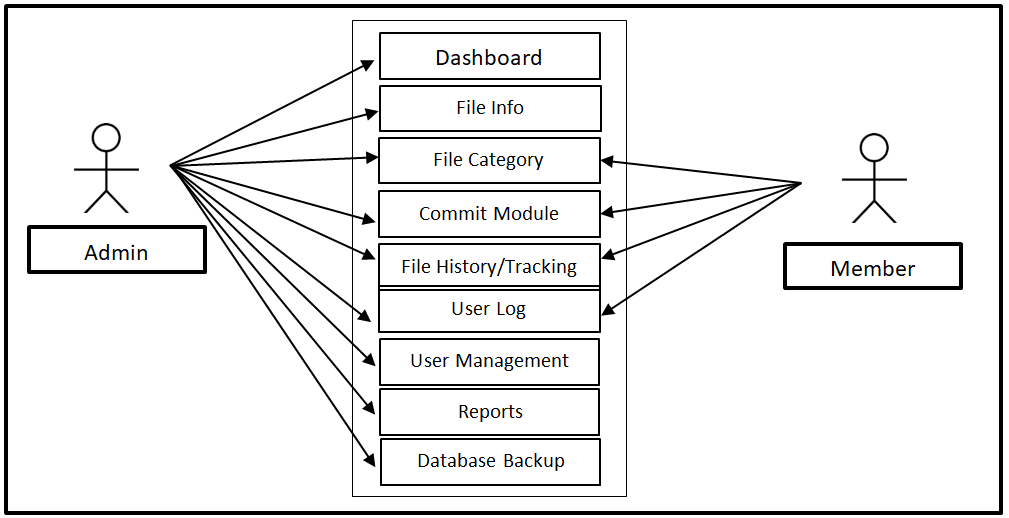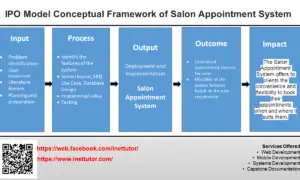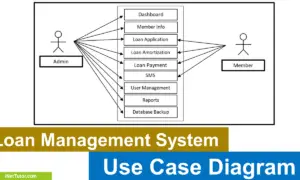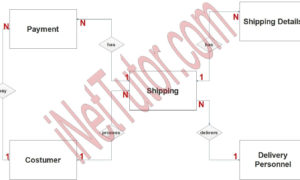Document Management System Use Case Diagram
A Document Management System (DMS) Use Case Diagram is a crucial tool for software engineers and stakeholders when it comes to developing a comprehensive and effective DMS solution. This type of diagram provides a visual representation of the interactions between different actors and the system being developed, making it easier to understand the different use cases, or scenarios, that the system will need to support. By using a DMS Use Case Diagram, stakeholders can gain a better understanding of the system requirements, improve communication, and enhance the testing process. In this article, we will explore the importance and benefits of using a DMS Use Case Diagram in the development of a Document Management System, and how it can help to ensure that the final product meets the needs of all stakeholders. Whether you are a software engineer, a business owner, or simply interested in understanding the role of use case diagrams in DMS development, this article provides valuable insights and information on this topic.
About the Project
The capstone project, “Document Management and Tracking System,” is intended for businesses and organizations that need to store and manage documents electronically. The system will keep track of documents coming in and out of various departments. Manual tracking is the most common method of document tracking. The staff will call or personally request updates on the time-consuming and inefficient documents. The researchers employ an IT-based solution to respond to the requirement for an effective tool to track documents. The researchers want to digitize document processing to make it easier to track, retrieve, revise, and update them. The researchers want to create an automated Document Tracking System to make document tracking and monitoring easier.
What is Use Case Diagram?
A Use Case Diagram is a type of diagram used in software engineering to represent the different interactions between actors and the system being developed. In the context of a Document Management System (DMS), actors might include document administrators, document contributors, and document users. The Use Case Diagram outlines the different use cases, or scenarios, that the DMS will need to support, such as uploading documents, searching for documents, and managing document access rights.
The use of a Use Case Diagram in the development of a DMS provides several benefits. Firstly, it helps to ensure that all stakeholders have a clear understanding of the system’s functionality. This makes it easier for developers to determine which features and functionalities need to be implemented and helps to ensure that the DMS meets the needs of all stakeholders. Secondly, a Use Case Diagram provides a visual representation of the system’s capabilities, making it easier to identify areas where the system may need to be improved. Finally, the Use Case Diagram can be used as a tool for testing the system, by providing different scenarios for testing which includes all possible interactions and transactions.
Use Case Diagram

The image shown above is the use case diagram of the Document Management System. The system has two user sides, the admin and the member. The admin can access the entire core modules of the system while the member can access the File Category, Commit Module, File History/Tracking and Use Log modules of the system.
Use Cases
The following are the discussions that describe how a user uses a system to accomplish a particular goal.
Use Case: Dashboard
Actor(s): Admin
Description:
This feature is used to manage the information displayed in the dashboard of the system.
Successful Completion:
- The admin can search, add, update and remove information to be displayed in the dashboard.
Alternative: none
Precondition: The admin will login first to access the dashboard.
Post Condition: updated dashboard information.
Use Case: File Info
Actor(s): Admin
Description:
This feature is used to manage the information of the files stored in the system.
Successful Completion:
- The admin can search, add, update and remove file details in the system using this feature.
Alternative: The admin can access and manage all file information using this feature.
Precondition: The admin will login first to access the File Info module.
Post Condition: updated File Information
Use Case: File Category
Actor(s): Admin and Member
Description:
This feature is used to manage the file categories in the system.
Successful Completion:
- Members can view categories of files using this feature.
- The admin can search, add, update and remove file category data in the system.
Alternative: The members can only view file category information; the admin can access and manage all file category.
Precondition: The admin and the members will login first to access the File Category module in the system.
Post Condition: Updated File Category
Use Case: Commit Module
Actor(s): Admin and Member
Description:
This feature is used to manage the activities committed by the members to the file.
Successful Completion:
- Members can use this feature to commit activities to a file.
- The admin can search, add, update and remove commit data in the system.
Alternative: The members can only commit update in a file; the admin can access and manage all data committed.
Precondition: The admin and the members will login first to access the Commit module in the system.
Post Condition: Updated Commit Data
Use Case: File History/Tracking
Actor(s): Admin and Member
Description:
This feature is used to manage tracking of file history in the system.
Successful Completion:
- Members can view and browse the file history.
- The admin can search, add, update and remove file history data in the system.
Alternative: The members can only view file history information; the admin can access and manage all file history and tracking.
Precondition: The admin and the members will login first to access the File History/Tracking module in the system.
Post Condition: Updated File History

Use Case: User Log
Actor(s): Admin and Member
Description:
This feature is used to manage user’s log or activities done using the system.
Successful Completion:
- Members can view and browse their own logs in the system.
- The admin can search, add, update and remove user log data in the system.
Alternative: The members can only view their logs; the admin can access and manage all user logs.
Precondition: The admin and the members will login first to access the User Log module in the system.
Post Condition: Updated User Logs
Use Case: User Management
Actor(s): Admin
Description:
This feature is used to manage the information of users of the system.
Successful Completion:
- The admin can search, add, update and remove user details in the system using this feature.
Alternative: The admin can access and manage all user information using this feature.
Precondition: The admin will login first to access the User Management module.
Post Condition: updated User Information
Use Case: Reports
Actor(s): Admin
Description:
This feature is used to view and print the reports in the system.
Successful Completion:
- Admin can view, print and export the report of the system.
Alternative: None
Precondition:
- Admin will need to login to access the reports.
Post Condition: hard and soft copy of the report of the system.
Use Case: Database Backup
Actor(s): Admin
Description:
This feature is used to manage the backup database of the system.
Successful Completion:
- The admin can add, edit, and update database backup information.
Alternative: None
Precondition: Admin will create and connect the backup database.
Post Condition: new backup database.
Summary
The capstone project, “Document Management and Tracking System,” is intended for businesses and organizations that need to store and manage documents electronically. The image shown above is the use case diagram of the Document Management and Tacking System. The system has two user sides, the admin and the member. The admin can access the entire core modules of the system while the member can access the File Category, Commit Module, File History/Tracking and Use Log modules of the system. In conclusion, the use of a Use Case Diagram is a valuable tool in the development of a DMS. It helps to ensure that the DMS meets the needs of all stakeholders, provides a comprehensive and user-friendly platform for managing document operations, and makes it easier to identify areas for improvement. Whether you are a software developer, a business owner, or simply interested in understanding how DMS works, understanding the use of Use Case Diagrams in DMS development is a valuable area of knowledge.
Readers are also interested in:
Document Management and Tracking System
Barcode Based Document Control and Management System
You may visit our Facebook page for more information, inquiries, and comments. Please subscribe also to our YouTube Channel to receive free capstone projects resources and computer programming tutorials.
Hire our team to do the project.


